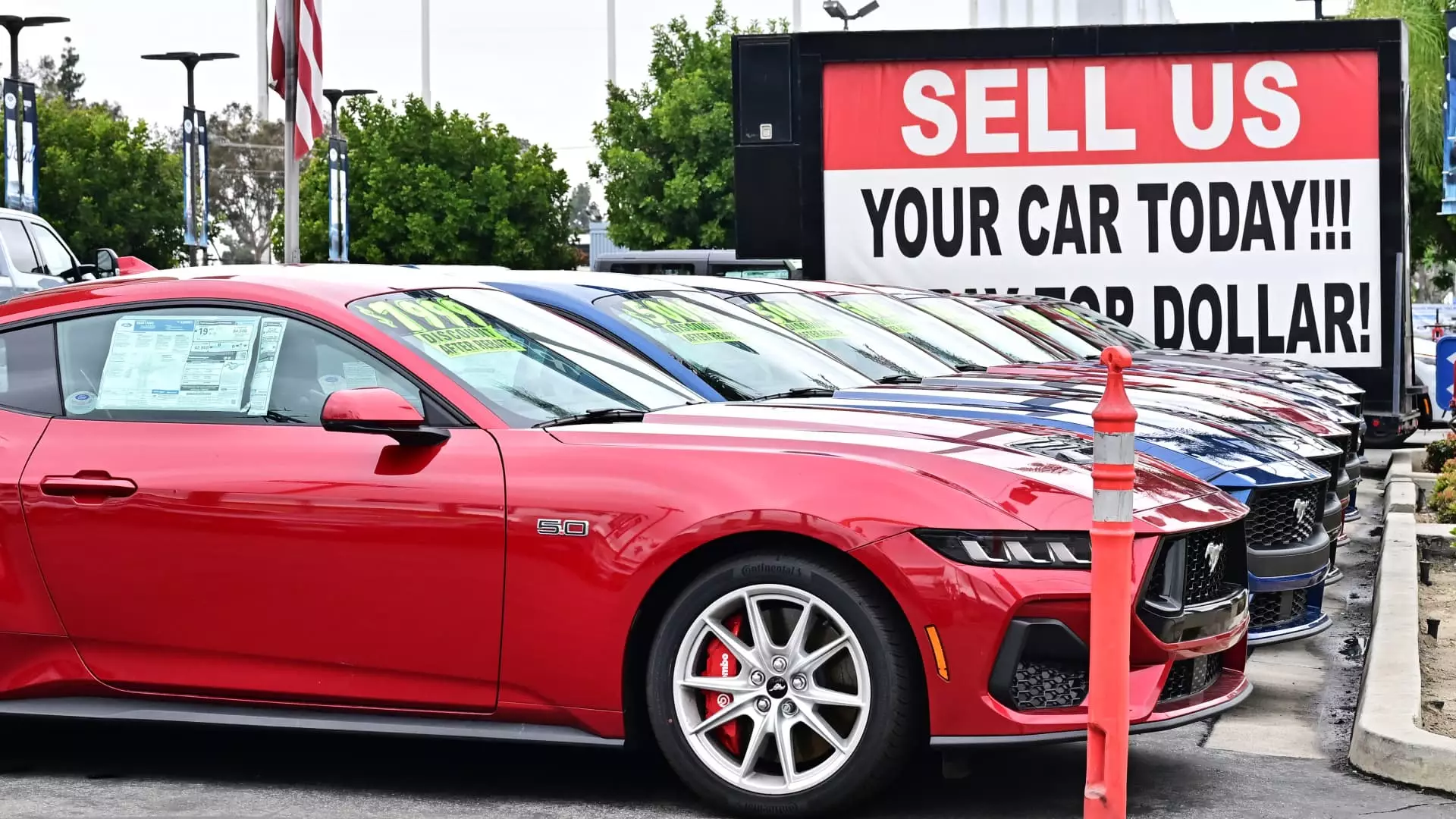In the murky waters of the automotive world, used vehicle prices have recently shown a remarkable shift. After peaking in April, the Cox Automotive’s Manheim Used Vehicle Value Index illustrated a notable decline of 1.5% in May, a breath of fresh air yet still hovering 4% above last year’s figures. What was once a frantic market characterized by inflated prices is now recalibrating itself in the face of external pressures, such as the inflated tariffs imposed under former President Donald Trump’s administration. Though these tariffs primarily target new vehicles, their ripples have unfavorably distorted the cost landscape of preowned automobiles.
A substantial number of consumers, anticipating potential hikes in prices, rushed to secure used vehicles. This short-term panic purchasing reflects a fundamental truth: the perception of impending scarcity can drive demand in unpredictable ways. While there may be a direct correlation from new to used vehicle prices, the psychological toll of tariffs pushes consumers into the used segment faster than they may ordinarily choose to.
Wholesale Versus Retail: A Growing Disconnect
It’s interesting to note that the retail prices consumers pay for used vehicles have not aligned seamlessly with the fluctuations in wholesale prices. Traditionally, retail rates are expected to ebb and flow alongside wholesale trends; however, they have lagged recently, creating a perplexing disparity. This gap signals a lack of responsiveness in the market, indicating that consumers are still bound to the higher retail prices despite the descending wholesale figures.
Jeremy Robb’s insights shed light on why this decoupling occurs: while wholesale values softened in May, inventory levels—a staggering 2.2 million units—remain comparatively low. This scarcity of available options translates into price resilience at the retail level, as market participants are faced with limited choices. Tight inventories drive competition among buyers, often resulting in steady or inflated prices in the face of declining wholesale values.
Factors Affecting the Used Vehicle Market
The used vehicle sector’s stability can be attributed to several intertwined factors. For one, consumer behavior has shifted; more individuals are choosing to hold onto their automobiles longer, rather than upgrading frequently. This consumer reluctance to constantly cycle through vehicles has contributed to the existing inventory crisis. The pandemic and subsequent supply chain issues have compounded this situation, demonstrating just how interconnected these sectors are.
Signals from Cox’s report indicate subtle, yet critical improvements in the year-over-year statistics. Although retail used vehicle sales decreased by 3% month over month in May, they increased when compared to last year’s figures. This steely resilience of the market hints at an underlying toughness: Americans still value their vehicles, even in a climate marked by uncertainty.
In sum, the used vehicle market is navigating through a complex landscape shaped by external pressures, consumer behavior shifts, and evolving economic conditions. The recent price stabilization is merely a calm in what can be a stormy environment; it remains to be seen whether these trends are sustainable moving forward.

